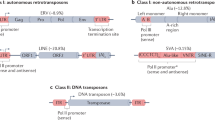Abstract.
Genome sequences of many model organisms of developmental or agricultural importance are becoming available. The tremendous amount of sequence data is fuelling the next phases of challenging research: annotating all genes with functional information, and devising new ways for the experimental manipulation of vertebrate genomes. Transposable elements are known to be efficient carriers of foreign DNA into cells. Notably, members of the Tc1/mariner and the hAT transposon families retain their high transpositional activities in species other than their hosts. Indeed, several of these elements have been successfully used for transgenesis and insertional mutagenesis, expanding our abilities in genome manipulations in vertebrate model organisms. Transposon-based genetic tools can help scientists to understand mechanisms of embryonic development and pathogenesis, and will likely contribute to successful human gene therapy. We discuss the possibilities of transposon-based techniques in functional genomics, and review the latest results achieved by the most active DNA transposons in vertebrates. We put emphasis on the evolution and regulation of members of the best-characterized and most widely used Tc1/mariner family.
Similar content being viewed by others
Author information
Authors and Affiliations
Corresponding author
Additional information
Received 8 June 2004; received after revision 26 October 2004; accepted 18 November 2004
Rights and permissions
About this article
Cite this article
Miskey, C., Izsvák, Z., Kawakami, K. et al. DNA transposons in vertebrate functional genomics. CMLS, Cell. Mol. Life Sci. 62, 629 (2005). https://doi.org/10.1007/s00018-004-4232-7
DOI: https://doi.org/10.1007/s00018-004-4232-7




